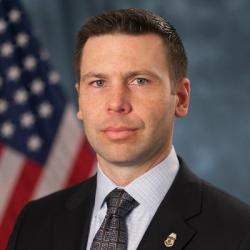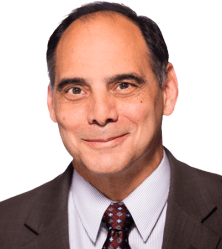

12:30 pm EDT - 2:15 pm EDT
Past Event
12:30 pm - 2:15 pm EDT
Washington, DC
On September 20, Department of Homeland Security Acting Secretary Kevin McAleenan delivered remarks on a new DHS framework on countering domestic terrorism and targeted violence at the Brookings Institution. The event was co-sponsored by Brookings and the Heritage Foundation. In his remarks, Secretary McAleenan emphasized the evolving security threats since September 11, 2001. “Today,” he said, “they have evolved beyond those foreign terrorist organizations to include emerging challenges with domestic terrorism and targeted violence here at home.” While continuing the department’s original, and core, mission of meeting the ongoing threat of foreign terrorist actors—especially ISIS and al Qaida—through a “defense-in-depth” approach, Secretary McAleenan explained that the new Framework expands his agency’s focus with a coordinated approach to a “growing number of threat actors who seek to attack the seams of our diverse, vibrant social fabric and incite our nation’s most vulnerable populations—our youth, disenfranchised, and disaffected—to violence against their fellow citizens.”
He called attention to a range of foreign and domestic threats and offered a particularly strong condemnation of white supremacist violence. “In our modern age,” he said, “the continued menace of racially based violent extremism, particularly violent white supremacy, is an abhorrent affront to the nation, the struggle and unity of its diverse population, and the core values of both our society and our department. It has no place in the United States of America, and we will work to defeat it.”
Secretary McAleenan briefly described the framework’s four key goals, emphasizing that the department will pursue a “whole of community approach” to violence prevention while also protecting civil liberties and privacy rights. Learn more about the new DHS Strategic Framework for Combating Terrorism and Targeted Violence.
After Secretary McAleenan’s remarks, he sat down with Brookings Institution President John R. Allen for a short discussion and audience questions. In his opening remarks, President Allen had called DHS “a bulwark of our freedom and our safety” and anticipated one of the Framework’s themes, that “the threat we’re facing has evolved, and adaptation is required.”
What’s new in the framework? President Allen asked. Secretary McAleenan offered that given the evolving threats, the department and all of its subordinate agencies “need to coordinate, integrate, and galvanize” their outreach to communities and “make sure that everyone understands the tools [and] resources available and is focused on this problem … preventing pathways to violence and also being prepared to respond effectively.” In addition to state and local communities, faith-based organizations, and other nongovernmental organizations, the private sector has a role to play, especially technology and social media companies. President Allen asked the secretary to comment on the balance that must be found between addressing hateful and dangerous speech, and liberty/privacy concerns. McAleenan noted that “we have to understand without policing ideology or affecting speech how we see that risk and how we can intervene as a community in advance.”
Secretary McAleenan emphasized DHS’s “whole-of-community” approach expressed in the new framework. “We don’t want people to be complacent that something can’t happen here,” he said, but “we also don’t want people to be scared to go outside. … What we’re trying to do across the Department is empower citizens to be resilient, to understand risk factors, to be able to identify them, to know how to respond.” He described a range of response interventions, from law enforcement to conversation, from mental health to family support. “We want to provide people the awareness and the tools in that whole-of-community effort.”
Following the conversation between President Allen and Secretary McAleenan, an expert panel took the stage to discuss the Framework. Brookings Senior Fellow and Lawfare Executive Editor Susan Hennessey moderated a session with Chad Wolf—a DHS acting undersecretary and assistant secretary for strategy, plans, and risk; Seamus Hughes, deputy director of the Program on Extremism at George Washington University; James Carafano, a vice president at the Heritage Foundation; and George Selim, senior VP for programs at the Anti-Defamation League.
Wolf emphasized three points from Secretary McAleenan’s remarks: the evolving nature of the threats, including the “troubling rise in domestic terrorism related events”; the concern about attacks on soft targets—mass shootings in places such as movie theaters and concert venues; and DHS’ prevention mission, which he said isn’t as well understood as other missions, like aviation security. “Whether we talk about a whole of society or a whole of community approach, as well as working with our social media and internet providers, that’s really the difference maker here.”
Selim, who previously served as DHS’ first director of the Office for Community Partnerships and led the Countering Violent Extremism Task Force, said he appreciated Secretary McAleenan pointing out that “over the past decades more American lives have been lost at the hands of domestic terrorists than at the hands of foreign terrorists.” He also praised the inclusion of a homeland security threat assessment—“one of the key missing modes”—and the framework’s call for community resilience and partnerships.
Carafano introduced a critical view to the discussion, arguing that the framework document doesn’t reflect an evolution of the threat so much as an evolution in the Department of Homeland Security itself. “Although DHS is not really a domestic security agency, and dealing with domestic terrorism is not really a DHS job,” he said, “they have capabilities and instruments that are useful in helping and supporting that, because they’re there … for the baseline mission of the department.” He also cautioned against politicizing the public safety response. “If we try to analyze what the department is and should be doing through our political agendas … it does a great disserve to the instrument. And in turn if the instrument tries to be tuning itself to account for what people politically want to do, we’re not going to do good public safety.”
“I think what the document reflects, and appropriately and what we should focus on,” Carafano added, “is the efficient use of DHS resources in support of public safety missions, because the real executors here are the state and local government[s].”
Hughes, who previously worked at the National Counterterrorism Center, commended the document, but called it a “radical shift” because “the inclusion of targeted violence is going to change the way the Department of Homeland Security operates.” So, “if you’re talking about terrorism prevention or countering violent extremism, we talk a lot about community resiliency but the way you approach countering violent extremism for targeted violence is radically different than the way you would approach it for, say, jihadist-inspired terrorism.”
The conversation continued on themes to include targeted violence; the role of the internet in radicalizing content, and dealing with the technology companies that manage such content (and not just on the “dark web,” but on the public web, as Selim noted); concerns about censorship in dealing with radicalizing content; partnerships with other law enforcement agencies, especially the FBI; and the funding necessary for DHS to carry out any new missions.
Whether the new framework indicates the department is getting too far into, as Carafano put it, “the ideology business” or not, Selim noted an inexorable shift in the nature of the threat, calling it a paradigm shift. “It’s not the post-9/11 world as we know it.,” Selim said. “The world has changed, and the strategy alludes to this … the speed and nature and scope of radicalization and mobilization is different today. And when you see 4Chan, 8Chan, Gab, when you see vitriolic, bigoted rhetoric packaged neatly next to bomb-making instructions on the open web, this is a threat environment that didn’t exist a decade ago per se.”
“Coupled with the nature of a hyperpolarized environment politically, it’s a very combustible mix,” Selim added.

Moderator

Panelist



Landry Signé
May 27, 2025

Philip H. Gordon
May 16, 2025

Joshua T. White
May 14, 2025